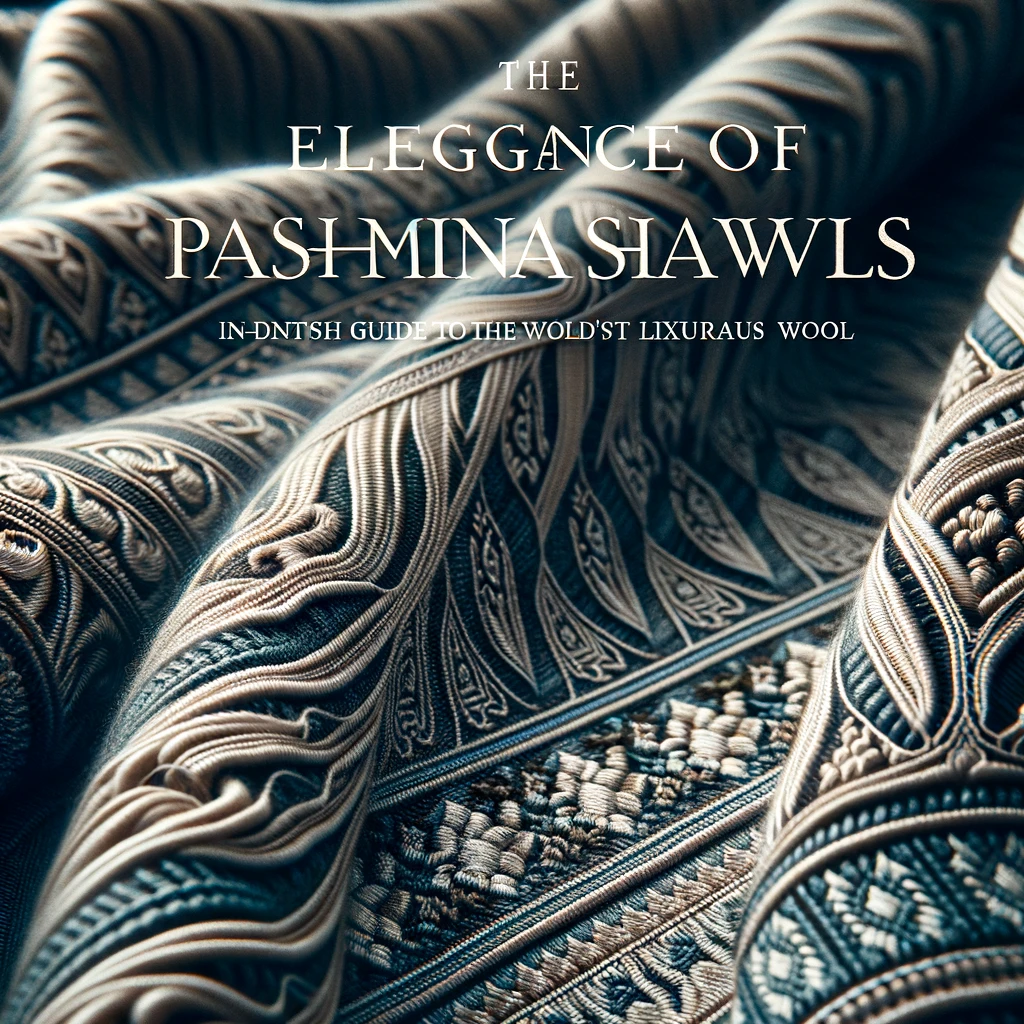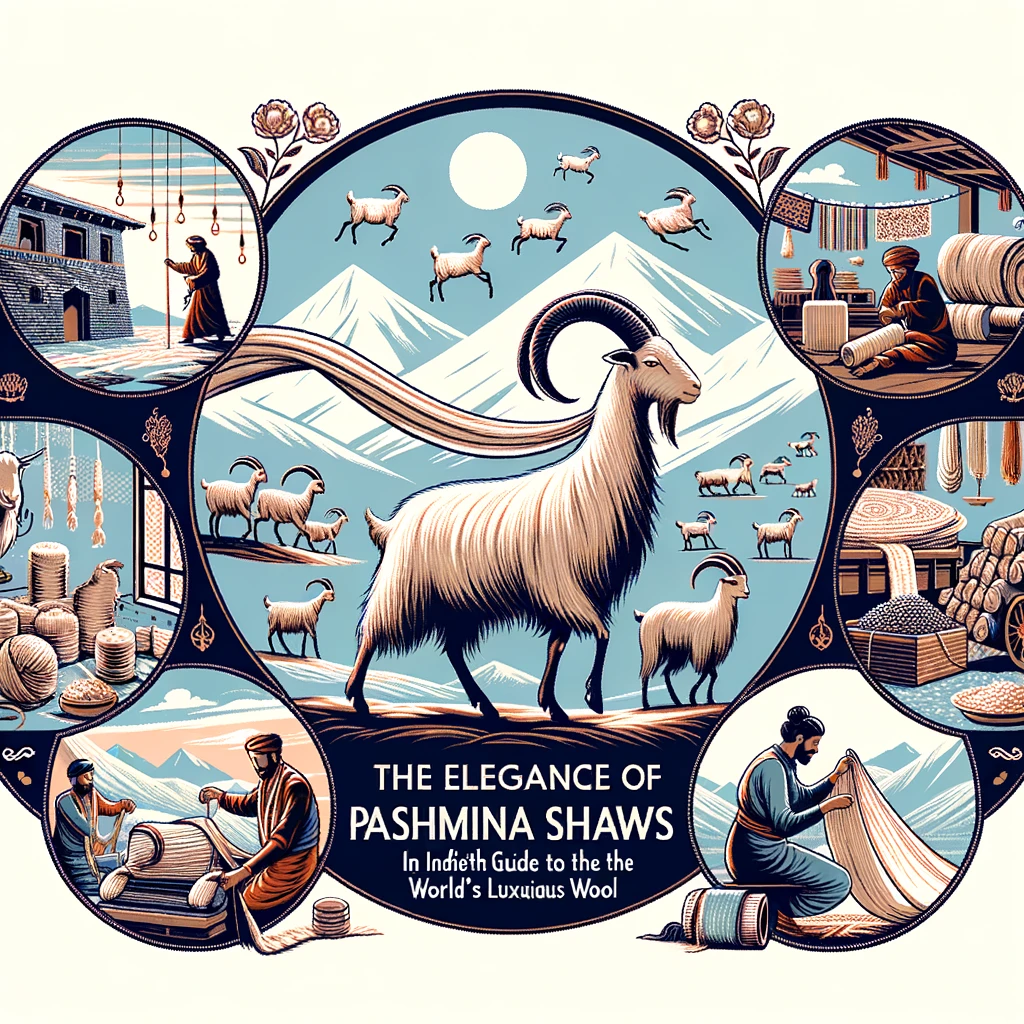
The Elegance of Pashmina Shawls: An In-Depth Guide to the World’s Most Luxurious Wool

Introduction
Pashmina shawls are not just accessories; they are heirlooms and works of art that have been cherished for centuries. Originating from the high-altitude terrains of the Himalayas, Pashmina wool is renowned for its softness, warmth, and durability. This article aims to provide an exhaustive guide to Pashmina shawls, from their historical significance to their modern-day allure, for an audience comprising teachers, students, and researchers.
The Genesis of Pashmina: What Makes It Unique?

The Source: Capra Hircus Goat
Pashmina wool is harvested from the undercoat of the Capra hircus, or Chyangra goat, native to the Himalayan region. These goats have adapted to the harsh, cold climate by developing a thick, soft undercoat, which is the source of this luxurious wool.
The Unparalleled Quality
Pashmina is considered one of the finest wools globally, distinguished by its softness, warmth, and long-lasting durability. Its unique properties make it a prized material in the textile industry.
A Journey Through Time: The History of Pashmina Shawls
Pashmina shawls have been intricately handcrafted in the Kashmir region of India for centuries. The skill of weaving Pashmina is a hereditary art form, passed down through generations.
A Symbol of Luxury and Elegance
Once the exclusive domain of royalty and nobility, Pashmina shawls have long been considered a symbol of luxury and elegance. Their timeless appeal continues to captivate people today, making them a sought-after accessory.
The Art of Crafting a Pashmina Shawl
From Fiber to Fabric
The process of creating a Pashmina shawl is labor-intensive and requires immense skill. The wool is hand-combed, cleaned, and sorted before the finest fibers are spun into yarn. This yarn is then hand-woven on a loom to produce the shawl.
The Intricacies of Design
Many Pashmina shawls are further adorned with intricate embroidery, adding another layer of artistry and value to these already luxurious items.
The Diverse World of Pashmina Shawls
Types and Varieties
Pashmina shawls come in various styles, including:
- Jamawar Shawls: Known for their traditional paisley patterns.
- Embroidered Shawls: Featuring intricate needlework, often with floral or geometric designs.
- Plain Shawls: Simple, yet elegant, these shawls are devoid of patterns or embroidery.
Caring for Your Pashmina: Tips for Longevity
Pashmina shawls require special care to maintain their quality. They should be dry-cleaned only, and any spot cleaning should be done gently with a mild detergent.
The Multifaceted Benefits of Pashmina Shawls
More Than Just Fashion
Pashmina shawls offer a plethora of benefits, from their natural insulating properties to their durability and aesthetic appeal. They are versatile accessories suitable for various occasions and make thoughtful gifts for loved ones.
Conclusion
Pashmina shawls are more than just a fashion statement; they are a testament to centuries-old craftsmanship and a symbol of timeless elegance. With proper care, a Pashmina shawl can last for generations, making it not just an accessory but an investment in luxury and style. This article serves as a comprehensive guide for anyone interested in the rich history and enduring allure of Pashmina shawls.